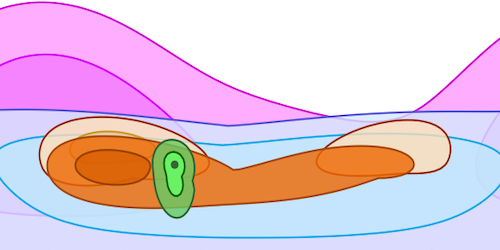Heavy-Flavor Properties Get an Update
Researchers have identified several promising experimental directions for expanding the standard model of particle physics. One such direction involves studies of “heavy-flavor physics,” which focus on decays of the heaviest lepton (tau) and of particles containing heavy (bottom and charm) quarks. New knowledge might emerge from the comparison of standard-model-based predictions with measurements. Since 2002, the Heavy Flavor Averaging Group (HFLAV) has worked to improve measurement accuracy by averaging results from several measurements for each of hundreds of observables. Today, HFLAV releases its latest update of heavy-flavor properties. In a 500-page paper, the team presents state-of-the-art average values—and associated uncertainties—of quantities such as particle lifetimes, decay “branching ratios” (the relative probability of various decay channels of a given particle), and the degree to which the decays violate charge conjugation parity symmetry [1].
HFLAV is made up of researchers from all major collaborations, which include the three ongoing experiments dedicated to this type of measurements (Belle II in Japan, BES III in China, and LHCb at CERN) as well as CERN’s two general-purpose experiment (CMS and ATLAS). The collaboration makeup is crucial to the averaging process, says HFLAV coleader Ulrik Egede of LHCb and Monash University in Australia. “Obtaining an average number is the easy part. The hard thing is to get the uncertainty on that number.” A proper uncertainty assessment must account for experimental subtleties, such as whether the same systematic errors affect the measurements being averaged. “You really need to understand your measurements,” he says.
The HFLAV update will offer improved values to theorists but also guide new measurements, says Egede. Heavy-flavor experiments have traditionally focused on the “beauty” sector and on mesons, particles made of one quark and one antiquark. But the work shows the breadth and value of experiments that are being done on the “charm” sector and on baryons, which are made of three quarks, he says.
–Matteo Rini
Matteo Rini is the Editor of Physics Magazine.
References
- Y. Amhis et al. (Heavy Flavor Averaging Group Collaboration), “Averages of b-hadron, c-hadron, and 𝜏-lepton properties as of 2021,” Phys. Rev. D 107, 052008 (2023).




